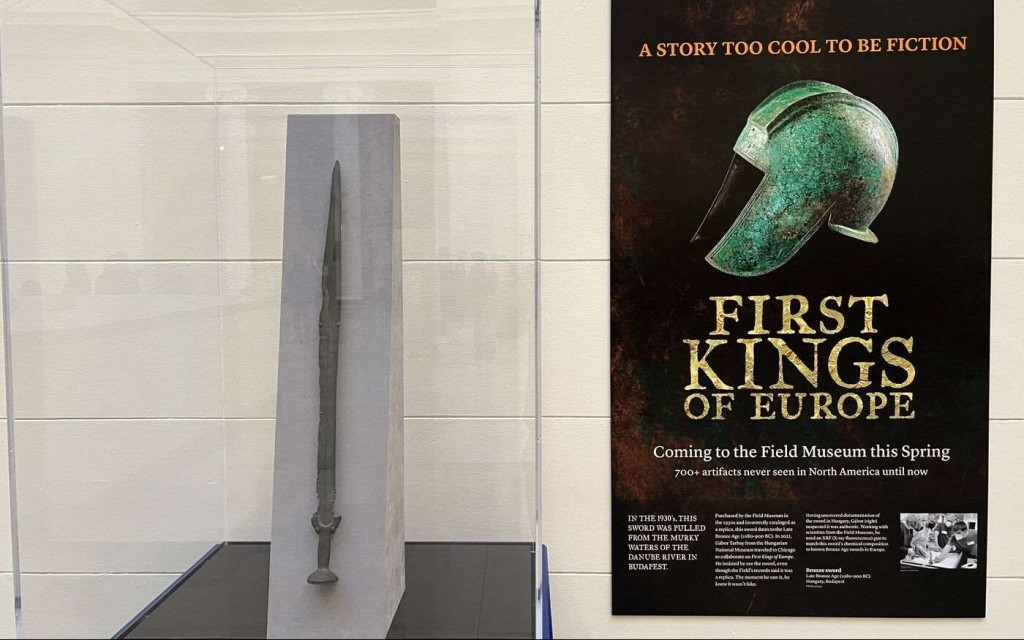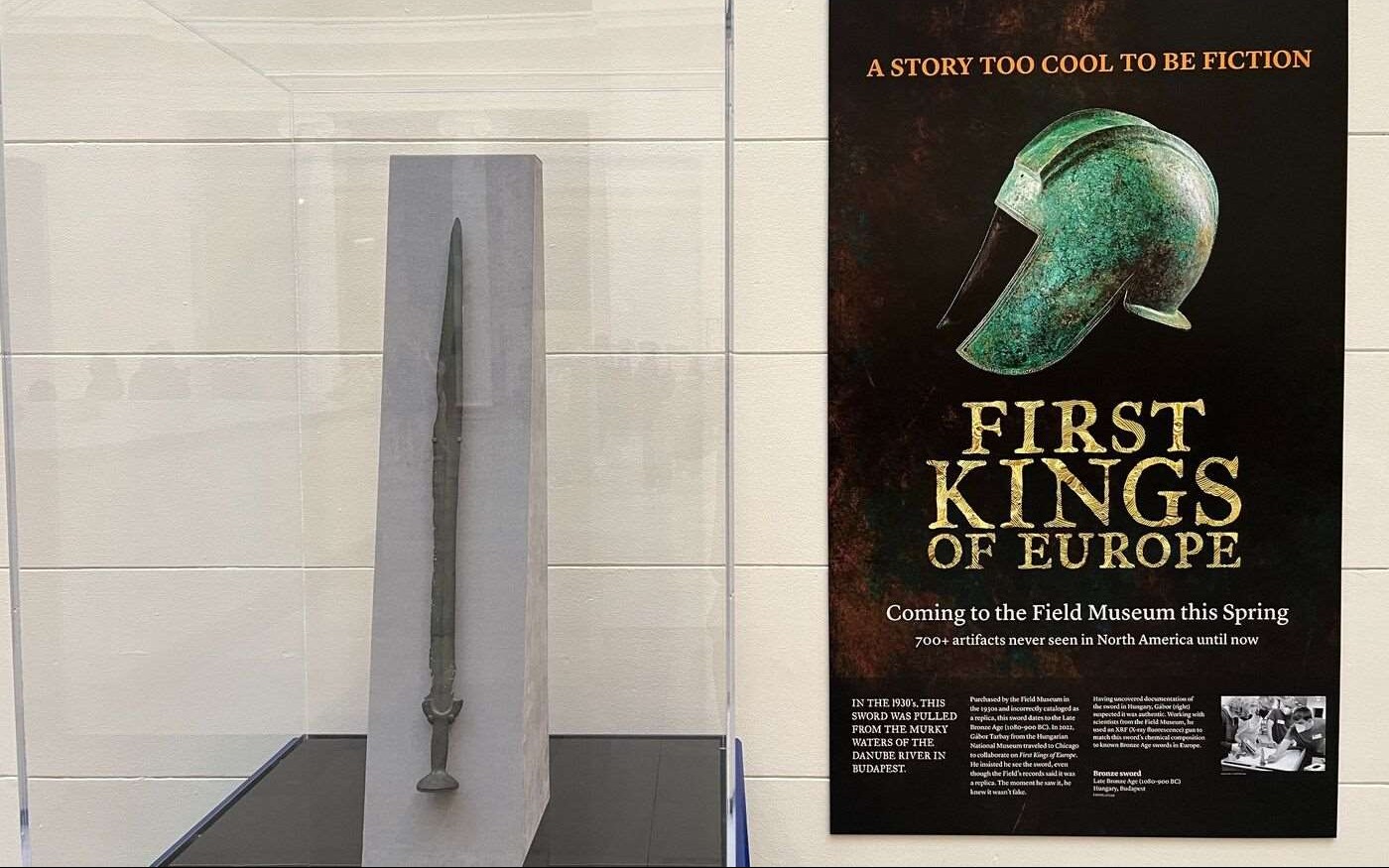
Nearly 100 years ago, the Chicago Field Museum acquired a bronze sword from Europe, but it was thought to be a well-made replica.
Now a new analysis has revealed that the sword is the real deal, dating back 3,000 years to the Bronze Age, and likely belonging to a warrior in the upper strata of society.
While preparing for First Kings of Europe, a special exhibition opening at the Field Museum in March 2023, Hungarian archaeologists working alongside Field Museum scientists asked to see the “replica” sword that had been retrieved from the Danube River in Budapest, Hungary in the 1930s.
János Gábor Tarbay, a Hungarian expert in Bronze Age metal artifacts thought it could be real as soon as he saw it. A team at the Field Museum on Tarbay’s recommendation then used an X-ray fluorescence detector, an instrument that looks like a ray gun, to compare the sword’s chemical makeup to other known Bronze Age swords in Europe.
Their contents of bronze, copper, and tin were nearly identical, and the newly-authenticated sword will be installed in the Field Museum’s main hall as a preview for the new exhibition.
MORE ARCHAEOLOGY NEWS: Rare Bronze Age Coffin Has Been Accidentally Discovered in a Golf Course Pond Along With Perfectly Preserved Ax
Found at the bottom of the Danube, it may have been thrown in as part of an ancient ritual 3,000 years ago to commemorate lost loved ones or a battle.
“It’s a very specific ritual tradition from this time period that speaks to the evolution of a ruling warrior class that was starting to emerge at that point in time,” Bill Parkinson, a curator of anthropology at the Field who helped create the upcoming First Kings of Europe exhibition, told Hyper Allergic.
MORE FROM THE BRONZE AGE: Historians Stunned: Uzbekistan Nomads Supplied a Third of the Bronze Used Across Ancient Mediterranean
“Usually this story goes the other way round,” he adds in a press release. “What we think is an original turns out to be a fake.”
Had this sword been known to be authentic earlier in the planning of the exhibition, it would have been included in the Bronze Age era section of the show, which will showcase items from southeastern Europe, spanning thousands of years.
SHARE This Clever Discovery With Someone Who Might Like This New Exhibit!




















